Worldwide, there are almost 40 million people currently living with HIV/AIDS, with over a million new infections every year. Celebrated every December 1, World AIDS Day aims to bring awareness to the millions living with HIV/AIDS and commemorate those lost to the disease.
HIV/AIDS is a viral infection that attacks a person’s immune system, making them more vulnerable to other infections and certain types of cancer. It spreads from person to person through sexual intercourse, sharing needles, pregnancy, and breastfeeding—but patterns of transmission and subpopulations at particular risk (e.g., men who have sex with men, sex workers, people in prisons, people who inject drugs, and transgender and gender-diverse people) vary in different parts of the world. In sub-Saharan Africa, in particular, women and adolescent girls continue to be disproportionately affected, accounting for 6 out of 10 new infections.
Globally, the number of AIDS-related deaths has been reduced by 69 percent since the peak in 2004, and the incidence of new cases has dropped by 38 percent, with the greatest gains being in high-burden countries in sub-Saharan Africa. The news is not as optimistic in other regions, with new cases increasing by 49 percent in eastern Europe and central Asia, and by 61 percent in the Middle East and North Africa. In part, these trends are due to a lack of HIV prevention services and barriers posed by punitive laws and social discrimination. Even within countries that have made progress, stigma, and discrimination discourage marginalized and key populations from seeking or receiving testing and treatment.
HIV has been transformed from a once fatal disease to a disease that is preventable and treatable due to a marked increase in accessibility of antiretroviral treatment. At the end of 2022, 76 percent of all people living with HIV were taking antiretroviral treatment, and 71 percent had achieved viral suppression. This is critically important since people living with HIV who achieve a suppressed viral load by consistent use of antiretroviral therapy have a “close to zero” risk of transmitting HIV to their sexual partner(s). This year, new guidance from the World Health Organization and a Lancet systematic review described the role of HIV viral suppression in improving individual health and halting onward HIV transmission. While this is positive news, reports also emphasize that close to 1 in 4 people living with HIV are not getting treated, and among children living with HIV, less than half have viral load suppression.
This year’s World AIDS Day theme, “Let Communities Lead,” encourages public health leaders to center affected communities in their responses. By removing barriers and empowering communities to take the lead, leaders can help build trust in HIV prevention and treatment programs and achieve global goals to end AIDS by 2030. To learn more about the global HIV/AIDS epidemic, check out our resource pack on Global Infectious Diseases: HIV, TB, and Malaria and explore the selected resources below.
Selected Resources:
- Let Communities Lead — UNAIDS World AIDS Day Report 2023, UNAIDS 2023
- HIVinfo Fact Sheets, HIVinfo 2023
- This is How the World Finally Ends the HIV/AIDS Pandemic, Nature 2023
- HIV Statistics, Globally and by WHO Region, World Health Organization 2023
- UN Global AIDS Update 2023, UNAIDS 2023
- Global HIV Programme, World Health Organization
- HIV Estimates for Children Dashboard, UNICEF 2023
